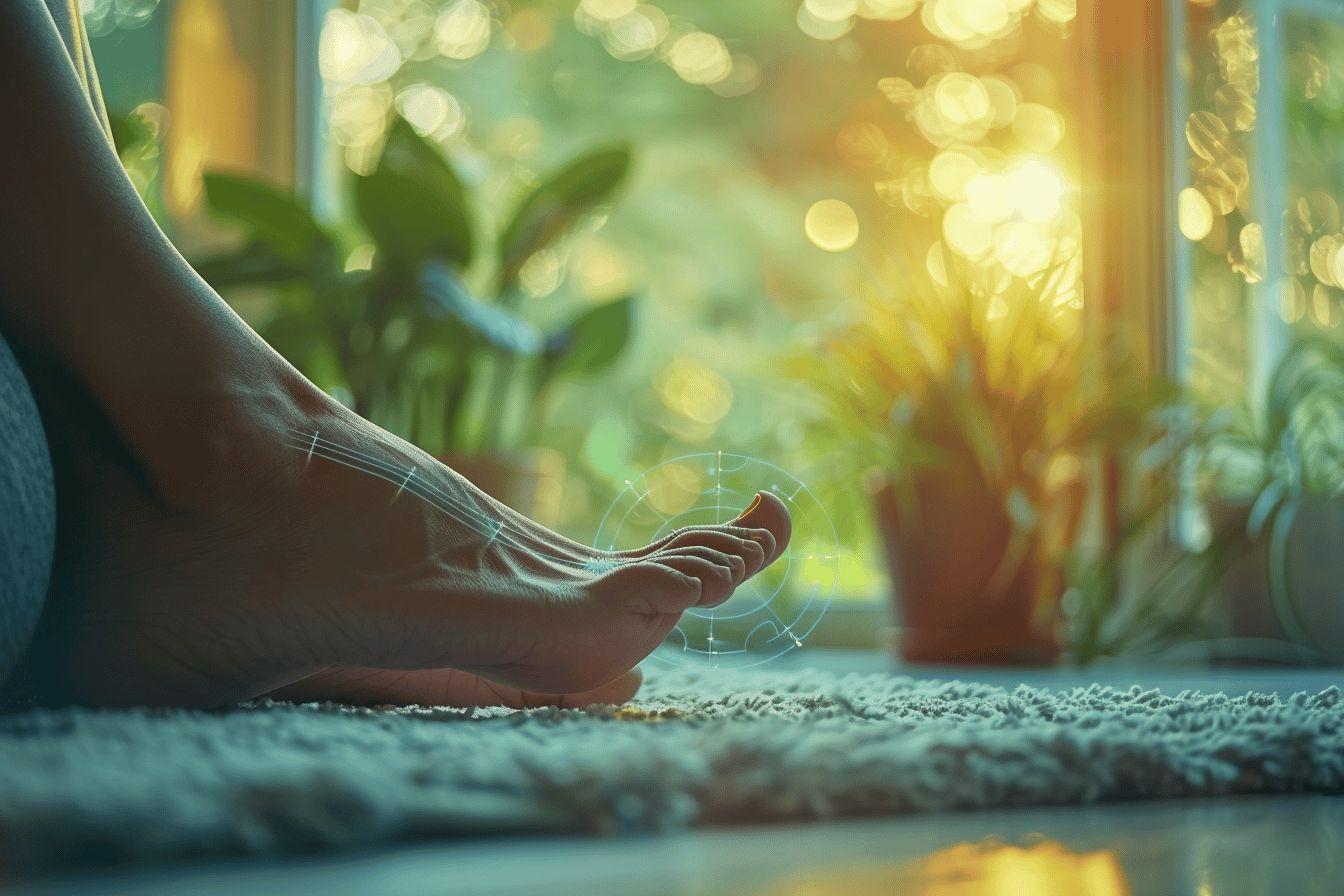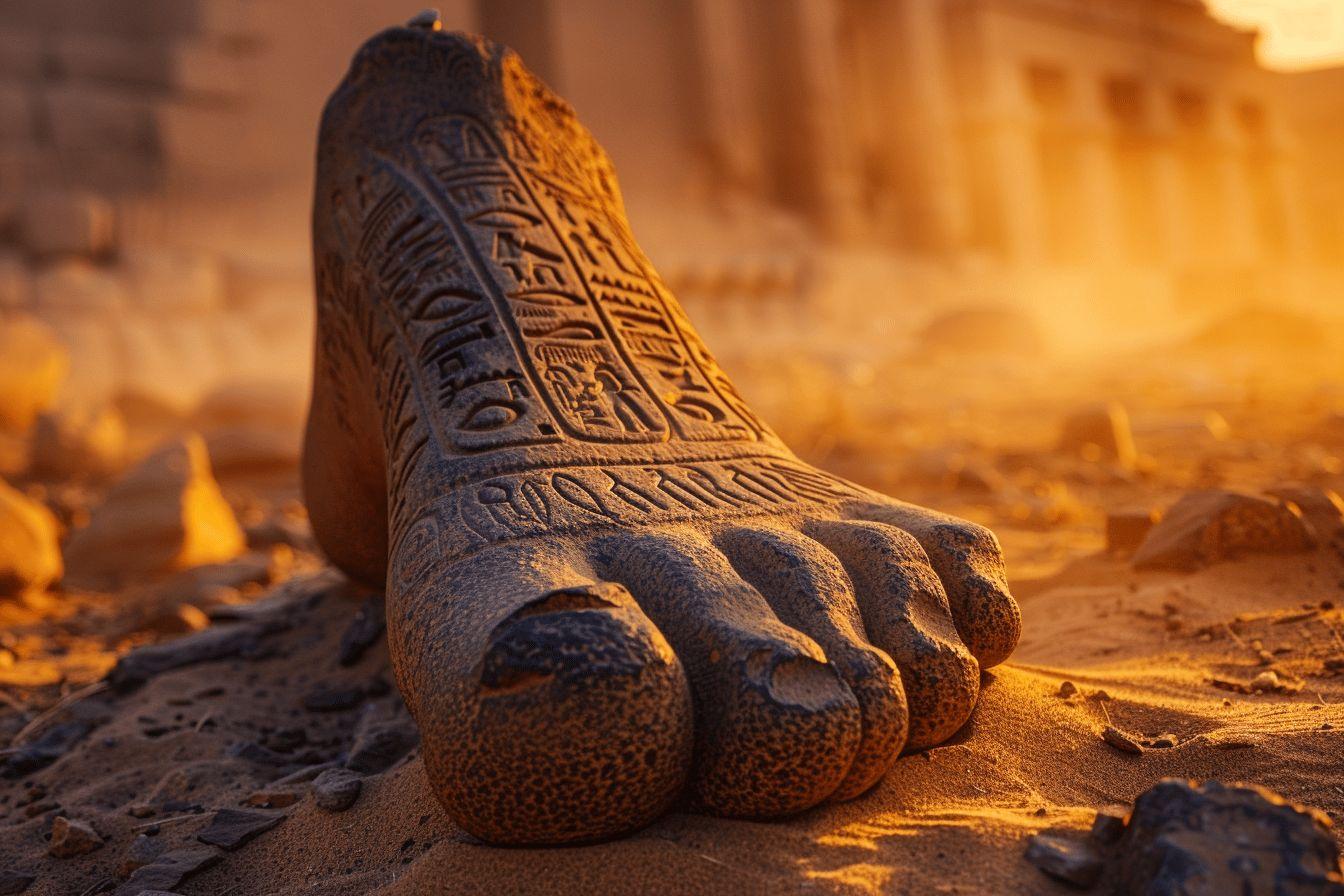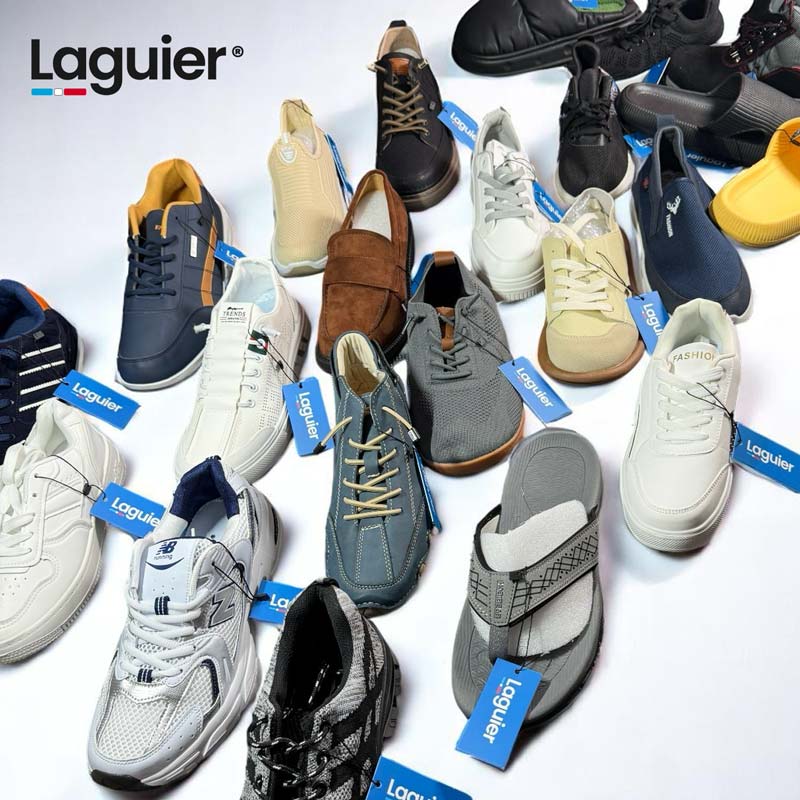Heel spurs, a painful bony growth on the heel, can be effectively treated. Here are the key points to remember:
- Symptoms: Sharp pain in the heel, especially in the morning
- Treatments: Stretching, ice, custom-fitted shoes, orthotics, and shockwave therapy
- Holistic Approach: Anti-inflammatory diet, Low-Impact Exercise and Stress Management
- Prevention: Maintaining a healthy weight, choosing the right footwear, and warming up before exercise
Heel spurs are bony growths that form on the heel, often causing intense and persistent pain. This condition, also known as plantar fasciitis, can significantly impede mobility and affect quality of life. Fortunately, there are several solutions to relieve this condition. Let's examine together the most effective remedies for treating a heel spur and regaining walking comfort.
Understanding Heel Spurs and Their Symptoms
Before looking at treatments, it's crucial to understand what exactly a heel spur is. This bony growth usually develops at the base of the calcaneus, the heel bone. It often results from chronic inflammation of the plantar fascia, the band of connective tissue that connects the heel to the toes.
The most common symptoms of heel spurs include:
- Sharp pain in the heel, especially when first walking in the morning
- A burning or tingling sensation in the heel
- Discomfort that worsens after standing or sitting for long periods
- Pain that worsens when climbing stairs or walking barefoot
It is important to note that the intensity of symptoms can vary from person to person. Some individuals will experience constant pain, while others will only experience occasional discomfort. The severity of these symptoms directly influences the choice of the most appropriate treatment.

7 Effective Remedies to Relieve Heel Spur Pain
When dealing with the pain caused by a heel spur, there are several treatment options available to you. Here are seven proven remedies to effectively relieve this condition:
- Stretching Exercises: Regular stretching of the plantar fascia and Achilles tendon can significantly reduce pain. Renowned podiatrist Dr. James Dunne recommends performing these exercises at least twice a day.
- Ice Application: Using an ice pack on the painful area for 15 to 20 minutes, several times a day, can help reduce inflammation and relieve pain.
- Wearing the Right Shoes: Choosing shoes with good arch support and heel cushioning can greatly relieve pressure on the heel spur.
- Football Orthotics: Custom-made orthotics can redistribute pressure and provide better support for the arch of the foot. foot.
- Shockwave Therapy: This non-invasive technique uses sound waves to stimulate the healing of damaged tissue.
- Anti-inflammatory Medication: Nonsteroidal anti-inflammatory drugs (NSAIDs) can help reduce pain and inflammation.
- Rest and Activity Modification: Resting your foot and avoiding high-impact activities can promote healing.
It is crucial to consult a healthcare professional before undertaking any treatment, especially if you are considering drug therapy or more advanced interventions such as shockwave therapy.
The Importance of a Holistic Approach to Treatment
Heel spur treatment involves more than just pain relief. A holistic approach that considers the patient's lifestyle, diet, and overall health is often necessary to achieve lasting results. Here is a summary table of the elements to consider in a comprehensive approach:
| Appearance | Recommendations |
|---|---|
| Power Supply | Eat an anti-inflammatory diet rich in omega-3s and antioxidants |
| Physical Activity | Opt for low-impact exercises like swimming or cycling |
| Stress Management | Practice relaxation techniques like yoga or meditation |
| Hydration | Drink enough water to maintain good tissue hydration |
| Sleep | Ensure 7 to 9 hours of restful sleep per night |
This comprehensive approach, advocated by experts like Dr. Sarah Johnson of the Boston Foot Clinic, not only treats the symptoms but also addresses the underlying causes of the spur. It promotes more complete healing and reduces the risk of recurrence.
Prevention and Long-Term Maintenance
Once you've successfully relieved your heel spur pain, it's crucial to implement prevention strategies to avoid recurrence. Here are some essential tips for maintaining long-term foot health:
Maintain a healthy weight: Excess weight increases the pressure on your feet. Losing weight if necessary can significantly reduce the stress on your heels. Sports medicine specialist Dr. Michael Brown suggests that even modest weight loss can have a significant impact on foot health.
Choose your shoes carefully: Choose shoes with good support and adequate cushioning. Avoid flat shoes with no support or high heels, which can put more pressure on the heel. The American Podiatric Association recommends changing shoes every 400 to 500 miles walked to maintain optimal support.
Warm up before exercise: Before any physical activity, take the time to warm up your feet and legs. Gentle stretches of the plantar fascia and Achilles tendon can prepare your feet for exercise and reduce the risk of injury.
Vary your physical activities: Alternate between different types of exercises to avoid constantly overloading the same areas of your feet. For example, combine walking, swimming, and cycling for a balanced approach to fitness.
By following these recommendations and paying attention to your body's signals, you can effectively manage your heel spur and prevent its recurrence. Remember that each case is unique, and it is always best to consult a healthcare professional for personalized advice. With patience and perseverance, you can overcome this condition and regain the pleasure of walking without pain.





Leave a comment
This site is protected by hCaptcha and the hCaptcha Privacy Policy and Terms of Service apply.